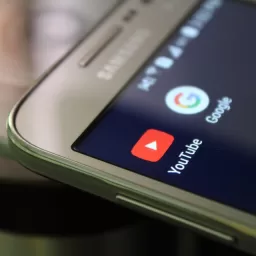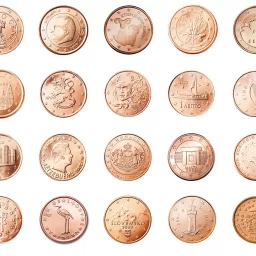In March 2006, there was renewed concern about the patent system, manifested not only in discussion of the NTP v. RIM (BlackBerry) case, which settled for $612.5 million but also on the fate of the use of injunctions in patent infringement cases, to be reviewed by the Supreme Court in eBay v. MercExchange. The Wall Street Journal wrote that U.S. patent law is “deterring research and penalizing innovation,” and that the patent system is “fast becoming a detriment to U.S. competitiveness, not to mention basic fairness.” The idea that patents are not central to innovation can also be found in the philosophy of some venture capitalists, who will directly tell you “patents are not why we are investing.”
Although some people, such as Adam B. Jaffe, and Josh Lerner, suggest the patent problems are of recent origin, with changes in the last 20 years which have led to a decline in patent quality but a strengthening in patent rights, the empirical evidence for this is thin. Many of the issues we see now have been around for a long time.
In the following, aspects in the history of the light bulb are discussed. Consistent with the viewpoint of the VCs, J.P. Morgan invested in Edison, the man, before Edison’s key patent
issued. To attract attention of the influential, Edison set up the first commercial electric power plant near Wall Street, much as RIM (BlackBerry) has attained impact through the opulence of
its customers. After a commercial beachhead was established, the patent wars began. Edison’s final success in the patent wars was established both offensively and defensively, and was greatly
assisted by his high profile. It is suggested that certain legal issues that confronted Thomas Edison in the 19th century will soon appear before stem cell workers in the 21st century. [Of various suggestions that Edison was troll-like in his behavior in not making product, one observes that Edison himself obtained the funds from investors to set up the first electric power plant, and then created the power plant. He made product. Whether he was actually the inventor of the light bulb is a different story.]
DID EDISON INVENT THE LIGHT BULB?
Although not widely discussed, the application for Edison’s famous US Patent No. No. 223,898, granted January 27, 1880, was involved in an interference with competing inventors Sawyer and
Man and Edison lost on the contested point.
Following up, the successors to Sawyer and Man challenged Edison’s patent. The basic claim of Edison read: An electric lamp for giving light by incandescence, consisting of a filament of carbon of high resistance, made as described, and secured to metallic wires, as set forth. The trial court noted that Edison “was the first to make a carbon of materials and by a process which was especially designed to impart high specific resistance to it; the first to make a carbon in the special form for the special purpose of imparting to it high total resistance; and the first to combine such a burner with the necessary adjuncts of lamp construction to prevent its disintegration and give it sufficiently long life.” The trial court also noted, somewhat
cryptically, “There are many adjudicated cases in which it appears that the inventor builded better than he knew; where a patent has been sustained for an invention the full significance of which was not appreciated by the inventor when it was made. In the case of the Bell telephone patent there was great room for doubt whether the speaking telephone had been thought of by Mr. Bell when he filed his application for a patent, but the court said: ‘It describes apparatus which was an articulating telephone, whether Bell knew it or not.'” Edison’s patent survived. A problem with the court’s analysis is that the distinctly long life of Edison’s filaments arose from the use of
bamboo, which was not disclosed in Edison’s patent.
In a case that went all the way to the Supreme Court, the relevant patent of Sawyer and Man, asserted against the interests of Edison, did not survive. The first claim of U.S. Patent No.
317,076 (related to patent 205,144 ) read: An incandescing conductor for an electric lamp, of carbonized fibrous or textile material and of an arch or horseshoe shape, substantially as
hereinbefore set forth. The Supreme Court noted: “It is admitted that the lamp described in the Sawyer and Man patent is no longer in use, and was never a commercial success; that it does not
embody the principle of high resistance with a small illuminating surface.” Getting to the broadness of the Sawyer/Man claim, the Supreme Court stated: “But if woods generally were not adapted to the purpose, and yet the patentee had discovered a wood ossessing certain qualities, which gave it a peculiar fitness for such purpose, it would not constitute an infringement for another to discover and use a different kind of wood, which was found to contain similar or superior qualities.” The court further noted that Sawyer/Man “made a broad claim for every fibrous or textile material, when in fact an examination of over six thousand vegetable growths showed that none of them possessed the peculiar qualities that fitted them for that purpose. Was everybody then precluded by this broad claim from making further investigation? We think not.”
The court noted that Edison “found suitable for his purpose only about three species of bamboo.” After discussing the amount of work Edison did with bamboo, the court asked: The question
really is whether the imperfectly successful experiments of Sawyer and Man, with carbonized paper and wood carbon, conceding all that is claimed for them, authorize them to put under
tribute the results of the brilliant discoveries made by others.”The court brought up the “infringement if later, anticipation if earlier” argument: “if the patent were infringed by the use of any such material, it would be anticipated by proof of the prior use of any such material.”
Although the Supreme Court did not address the issue, there were allegations by Edison at trial that Sawyer/Man had amended their application to conform to Edison’s work: “no such invention
was set forth in the original application, but was introduced for the first time more than four years after it was filed, and after the same material had been used by Edison, and claimed by
him in an application for a patent.” The trial court agreed, saying “after Edison’s inventions on this subject had been published to the world, there was an entire change of base on the part of Sawyer and Man, and that the application was amended to give it an entirely different direction and purpose from what it had in its original form …. [Testimony] shows that the idea of claiming carbons made from fibrous and textile materials was an after-thought, and was no part of the purpose of the original application.”
Of the issue of inventorship, text within the court cases manifests diffidence as to whether Edison was, or was, not the inventor of the light bulb. In 1875, Henry Woodward and Matthew
Evans patented a light bulb, the rights for which were purchased by Edison. In 1878, Joseph Wilson Swan invented a light bulb whose lifetime was about 13.5 hours. Edison’s bulbs in 1880, derived using a filament derived from bamboo, lasted 1200 hours.
The issues in the 1895 case are not unrelated to those in LizardTech v. Earth Resource Mapping, 433 F.3d 1373; 2006 U.S. App. LEXIS 137; 77 U.S.P.Q.2D 1391 (CAFC 2006) and are not
unrelated to issues in the current discussion of alterations in the practice of continuing applications.
[Endnote 13, which appears here in the text, states: 71 Fed. Reg. 48 (Jan. 3, 2006). Abuses of applicants while awaiting developments in similar or parallel technology caused by amending the pending application to cover developments. If the
amendments are covered by the disclosure, this practice is allowed. PIN/NIP, 304 F.3d 1235.]
STEM CELLS
The situation faced by the courts in the 1880’s, in trying to figure out who made the step-out invention with the light bulb, will soon be faced by the courts of the 21st century, in trying to figure out who has made the step-out invention in embryonic stem cells. Although there are presently numerous patent applications on somatic cell nuclear transfer [SCNT] in various phases of generating embryonic stem cells, there are presently questions of scope of invention and of enablement, just as there were in the 19th century. Although many people are now claiming
large, with perhaps limited enablement and written description, the ultimate winner will be the person, who both identifies the insight to make the entire system happen and obtains patent
protection thereon.
UPDATE TO “YOU ONLY LOOK TWICE”
In the November 2005 issue of Intellectual Property Today, I presented some data on continuing applications for FY 2004 from the PTO, and noted the USPTO is evaluating the possibility
of limiting continuations, which crystallized in the Federal Register in January 2006. Two readers from Chicago, Kevin Noonan and Paul Reinfelds, sent along data for FY 2005, and noted, with the small number of “second” continuing applications, that the PTO proposal limiting continuing applications, even if effected, would not likely solve the problem faced by the PTO.
[Endnote 18 stated of the data for FY 2005: There were 63,000 continuing applications, which included 44,500 cons/cips and 18,500 divisionals. Of these, 11,800 were second, or subsequent, applications. Separately, there were 52,000 RCEs, of which 10,000 were second, or subsequent. Thus, 21,800 applications of
384,228, were second or subsequent, which is 5.7%. As for FY2004, RCEs were the single most abundant “continuing” form, 52,000 of 384,228 [13.5%]. All “continuing” forms combined
constituted 115,000 of 384,228 [30%]. The contents of Endnote 18 were cited in comments made to the USPTO about proposed rulemaking in the area of continuing applications:
.
The comments referred to my April 2006 article in Intellectual Property Today, which unknown to me at the time of the comments, was not actually published by Intellectual Property Today. These comments to the USPTO objected to the proposed limitations on second, and subsequent, continuing applications on the basis that, even if implemented, the proposed limitations would NOT resolve the application backlog problem AND separately would adversely impact many reasonable uses of continuing application practice.]
Of Carhart’s book, “Lost Triumph,” the publisher is Putnam, not Putman. Two other reviewers have discussed the novelty of the book, even though the theory about J.E.B. Stuart’s possible
role had been published years before Carhart’s book.
[After March 2006, the Supreme Court decided the case eBay v. MercExchange. Therein, the Supreme Court made clear that entities such as universities and individual inventors, who don’t make product, could satisfy the four-factor test and obtain permanent injunctions to bar infringement of their patents.]






